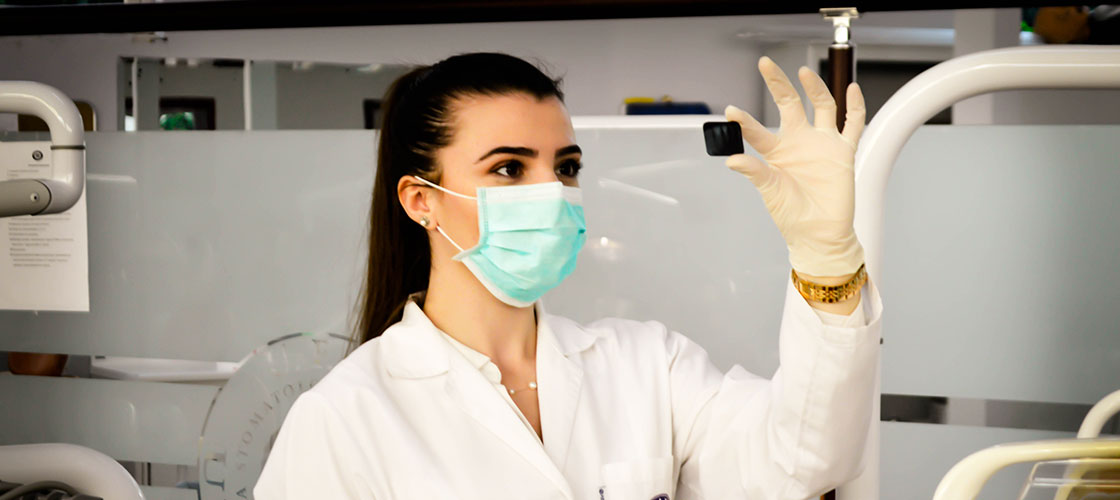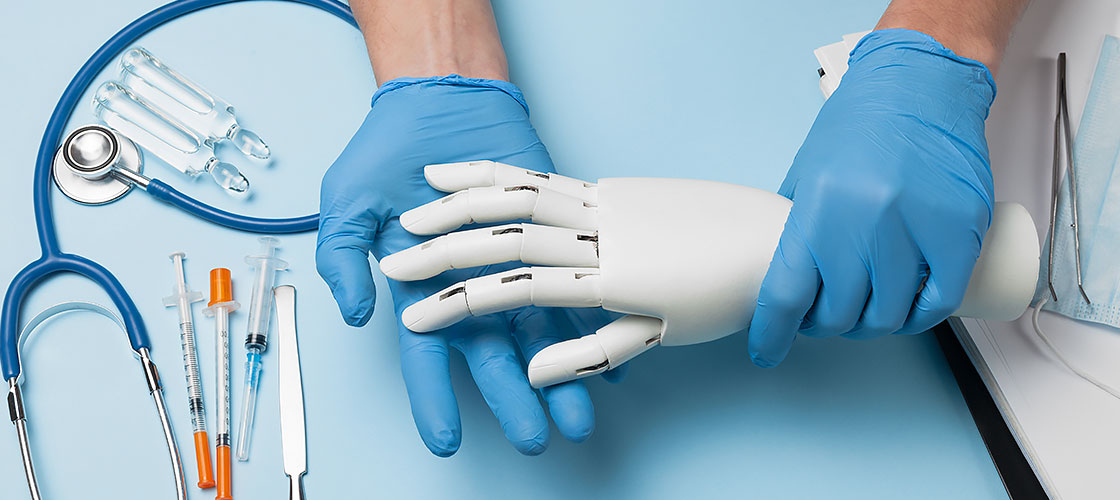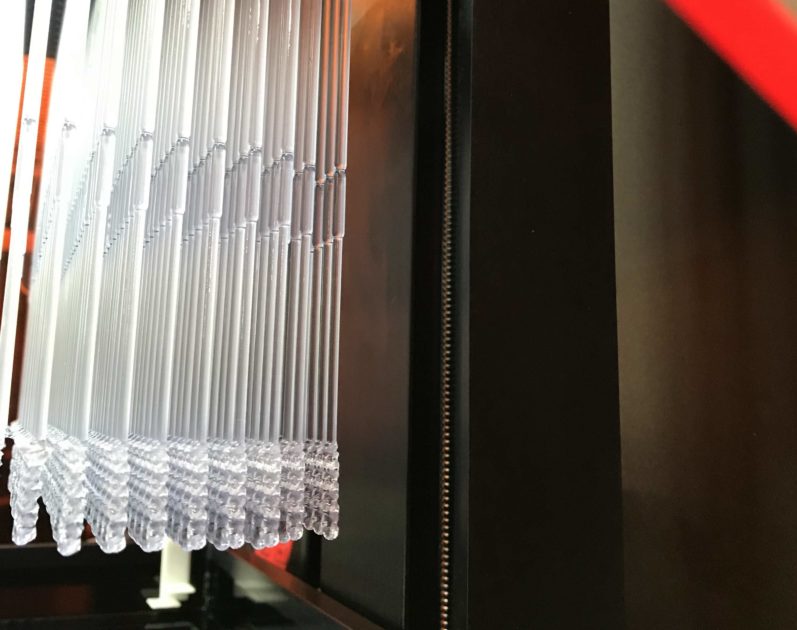3D printing is becoming a crucial tool in the innovation of medical supplies, equipment and procedures as it caters to a rising demand in patient-specific products. The technology’s capacity for complex design, customization, time/cost efficiency and the availability of sterilizable, biocompatible materials have all led to substantial advancements in the medical industry in recent years. Here are a few examples of how 3D printing has led to positive progress.
Training & Practicing
3D Printing offers an affordable way of printing specific models that can allow for more precise training for surgeons. Models of organs, for example, can be printed in a material that resembles human tissue, like silicone, and can be a more affordable and less-stressful source of practice than using human cadavers. Thanks to CTs, MRIs and 3D scanning technology, physicians can 3D print exact replicas of organs, bones, or any other part of their patient to gain a better understanding of what they will be facing in surgery or treatment. This gives them a chance to practice and develop improved surgical planning, which can speed up surgery time, creating less chances of infection and minimizing patient trauma.

Surgical Instruments
In any surgical procedure, the utmost precision is needed to ensure success. Thanks to rapid prototyping and the ability for customization, 3D printing allows for surgeons to have access to personalized and procedure-specific instruments. These instruments can be altered to better fit a surgeon’s hands, or a patient’s anatomy, and patient specific surgical guides can increase accuracy and efficiency to greatly improve surgical outcomes. Because modifications on 3D printed tools can be achieved quickly, this equips physicians with functionally improved tools that facilitate their operative techniques and the procedure at hand. Instruments can be printed in a number of different materials depending on their needs, including titanium, stainless steel as well as sterilizable biocompatible plastics. The potential for customization is limitless, and costs do not necessarily increase with instrument complexity.
Prosthetics
Prosthetics also benefit hugely from an ability to create patient-specific models, as getting them fitted is traditionally a prolonged and expensive process. Using 3D printing to create prosthetics that can fit someone’s particular anatomy perfectly is a cheaper and faster alternative. Prosthetics can be flexible, stronger, less bulky and easily personalized with the help of 3D printing. The significantly lower costs make them a better option for children who need access to new prosthetics as they grow. With contactless 3D scanning and printing, maxillofacial prosthetics can be produced easier than ever before. Eye, nose and ear prosthetics have been printed with silicone to perfectly fit patients who have lost or were born without facial parts to restore facial geometry and aesthetic. The customization power of 3D technology will continue to make it a key player in the innovation of future prosthetics.

Orthopaedic Implants
3D printing contributes greatly to the advancement of orthopaedic implants. The possibility of geometric freedom, customization options and quick iterations have the potential to produce implants that fit patients better than ever before, therefore increasing their longevity and comfort. 3D technology also facilitates the creation of porous bone replacement scaffolds, allowing for natural bone ingrowth and ongrowth.
Hearing Aids
Thanks to 3D scanning, hearing aid shells and earpieces can be digitally fitted to exact anatomical specifications and customized pieces can be mass-produced. This has the potential of giving many more people than ever access to hearing aids with optimal fit, all thanks to the digitization of the design process.

Testing / Covid Swabs
With the spread of COVID-19, the healthcare industry saw an immobilizing shortage of supplies due to the closure of traditional suppliers. 3D printing was able to meet many urgent needs by producing PPE supplies and ventilator parts at an astounding rate. Face shield designs were quickly optimized and printed by the thousands to help protect healthcare and plant workers dealing with exposure. Sterilized nasal swabs were also produced quickly to help increase testing ability. The speed and efficiency of 3D printing processes made it a crucial tool in providing immediate relief to emergency medical shortages.
Tissue Engineering
Tissue engineering focuses on finding new ways of developing or regenerating damaged tissue, creating models that can be used to study tissue development or for screening drugs. In order to regenerate or grow tissue, an appropriate scaffold needs to provide the right environment for growth. 3D bioprinting provides more control than conventional methods and enables the fabrication of structurally and biologically complex constructs and scaffolds to facilitate tissue engineering with the use of bio-inks. Researchers from the Rensselaer Polytechnic Institute have developed a way of 3D printing living skin by using two sets of bio-inks. Grafted onto the backs of immunodeficient mice, the blood vessels of the 3D printed skin successfully transferred blood and nutrients to the mice’s blood vessels. Though this research is not quite ready for use with humans, it is one of many examples of the immense potential of 3D printing in live tissue engineering.
Medical Grade Materials
To print medical equipment it is especially important that, depending on the application, the material be compatible with a biological system. Instruments must be sterilizable and strong, implants or other pieces to be placed inside the body must be biocompatible and corrosion-resistant. 3D printing provides many plastics and metals that are suitable. Nylon PA-12 is durable, sterilizable and corrosion-resistant and is also one of the most affordable medical grade materials to use. Stainless steel is also biocompatible and good for surgical instruments and temporary implants.
3D printing is quickly becoming an essential tool in the medical industry where personalization and precision are key. From improved surgical planning and tools, to better fitting prosthetics and implants and advancing tissue regeneration, 3D printing will only continue to boost the potential to improve and save lives.
Shapeways offers industrial, medical-grade materials in our FDA-listed facilities. For all of your medical 3D printing needs, find out how we can help.
The post How 3D Printing Boosts Innovation in the Medical Field appeared first on Shapeways Blog.

